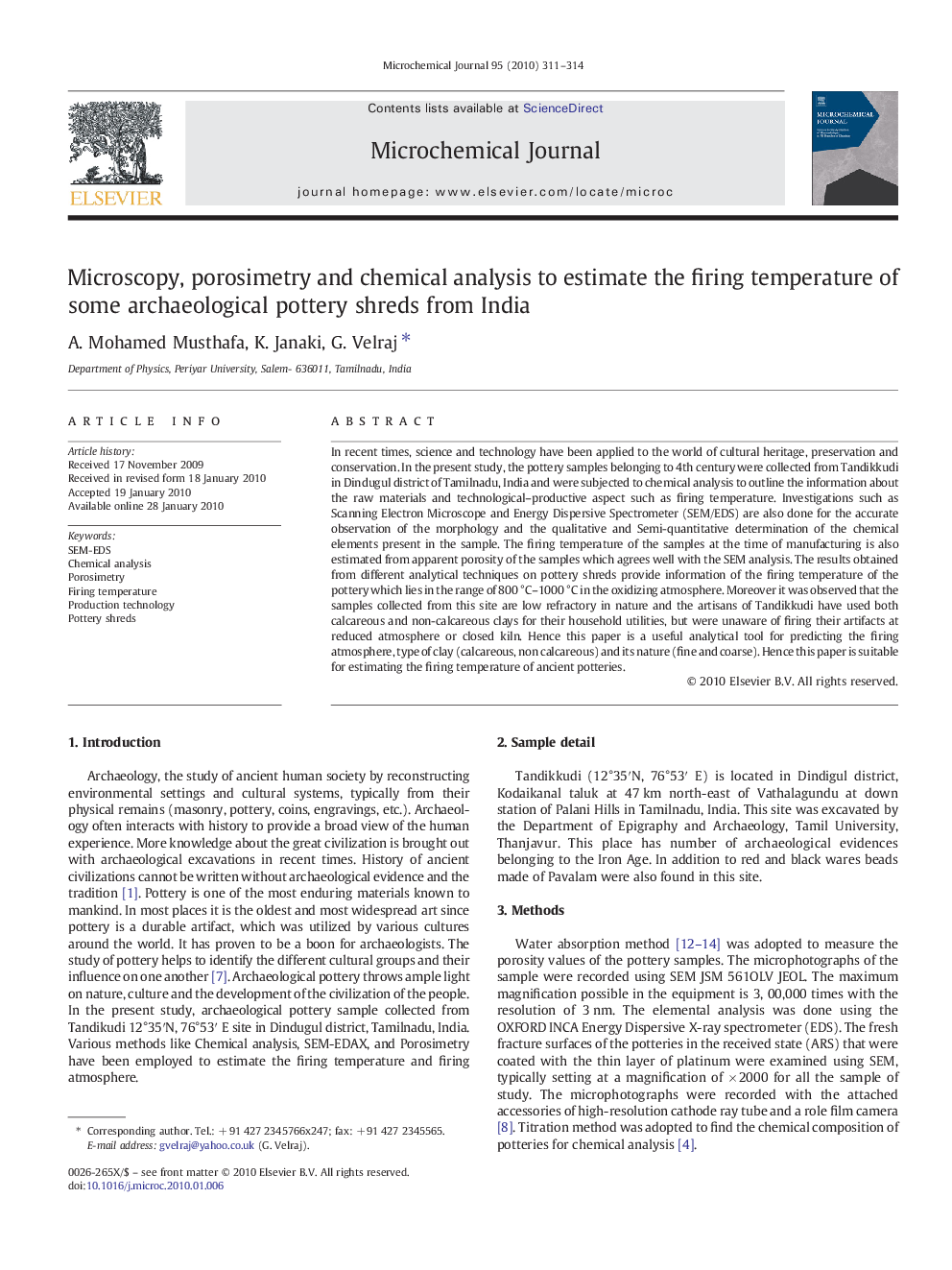| Article ID | Journal | Published Year | Pages | File Type |
|---|---|---|---|---|
| 1227986 | Microchemical Journal | 2010 | 4 Pages |
In recent times, science and technology have been applied to the world of cultural heritage, preservation and conservation. In the present study, the pottery samples belonging to 4th century were collected from Tandikkudi in Dindugul district of Tamilnadu, India and were subjected to chemical analysis to outline the information about the raw materials and technological–productive aspect such as firing temperature. Investigations such as Scanning Electron Microscope and Energy Dispersive Spectrometer (SEM/EDS) are also done for the accurate observation of the morphology and the qualitative and Semi-quantitative determination of the chemical elements present in the sample. The firing temperature of the samples at the time of manufacturing is also estimated from apparent porosity of the samples which agrees well with the SEM analysis. The results obtained from different analytical techniques on pottery shreds provide information of the firing temperature of the pottery which lies in the range of 800 °C–1000 °C in the oxidizing atmosphere. Moreover it was observed that the samples collected from this site are low refractory in nature and the artisans of Tandikkudi have used both calcareous and non-calcareous clays for their household utilities, but were unaware of firing their artifacts at reduced atmosphere or closed kiln. Hence this paper is a useful analytical tool for predicting the firing atmosphere, type of clay (calcareous, non calcareous) and its nature (fine and coarse). Hence this paper is suitable for estimating the firing temperature of ancient potteries.
